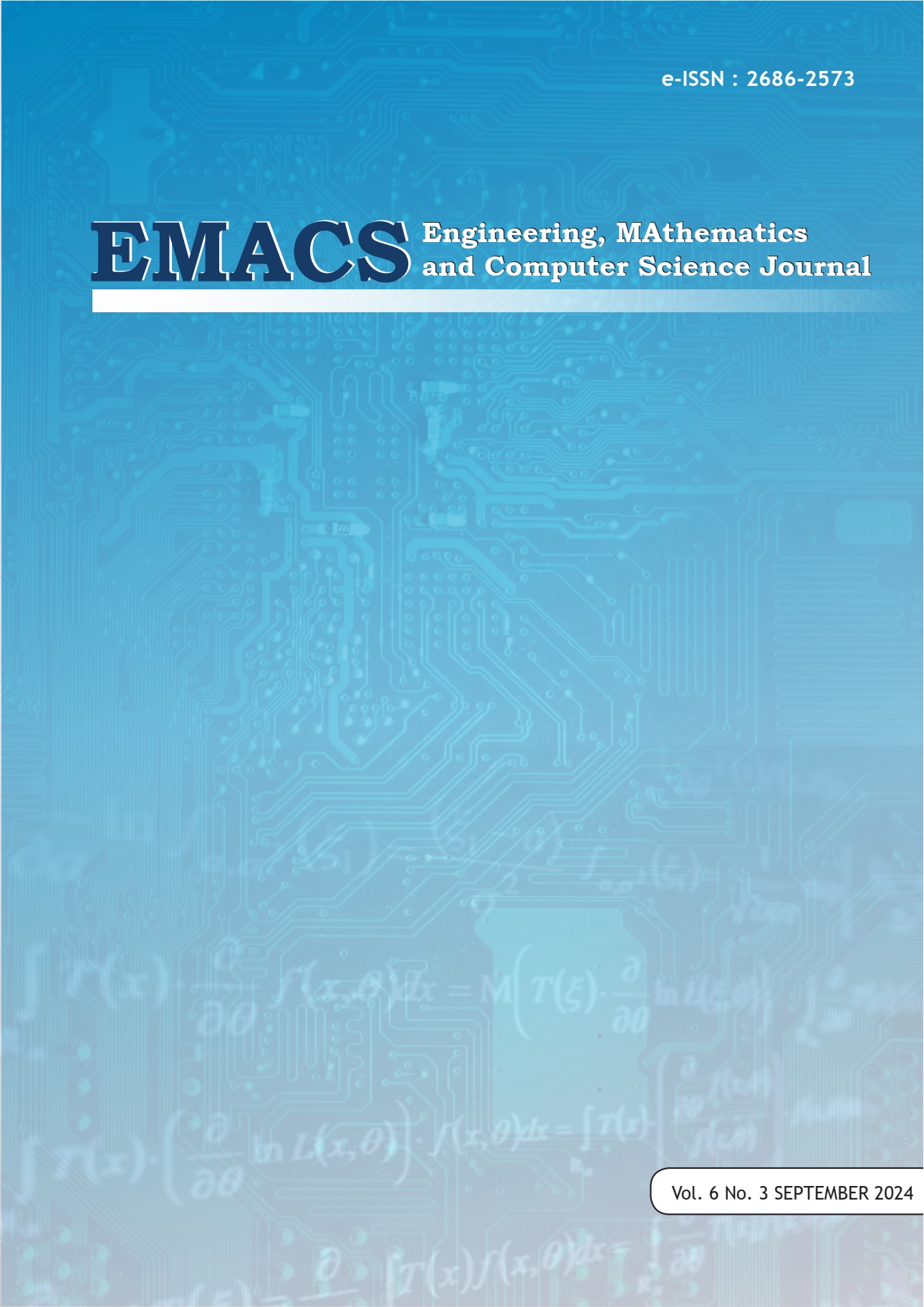Simulation Techniques in Sugarcane Transportation Model Using R Programming Language
DOI:
https://doi.org/10.21512/emacsjournal.v6i3.12344Keywords:
R Programming, Simulation, Circular Transportation System, SugarcaneAbstract
The R programming language is generally known for its strength in Monte Carlo simulations, and numerical computing. This study will try to utilize R for discrete event simulations, namely in transportation systems, especially sugarcane transportation. The purpose of this paper is to study the performance of the sugarcane transportation system from the plantation to the factory, by utilizing the R programming language. The things that will be studied are to obtain changes in the system parameters so that more optimal performance is obtained. These parameters include the time required for the sugarcane to be in the transportation system, the length of the sugarcane pile in the plantation before being transported, the amount of resources needed for all transportation activities (loading, transporting and unloading), the number of transport equipment, loading equipment and unloading equipment needed, so that the harvest target is met and the waiting time for the sugarcane to be milled is as minimal as possible. As well as the level of utility of all resources provided in the system. The stages in this study include 1) literature review, 2) describing the sugarcane transportation system, 3) building assumptions and system constraints, 4) designing the transportation system conceptually, 5) developing programming code, 6) model testing/verification, 7) model validation, and 8) conducting experiments on the model. The results of the analysis of the model output indicate that the “open source R†programming language can be effectively applied to model the sugarcane transportation system.
References
Bantacut, T., & Sukardi, I. A. S. (2012). Sugar Loss in the Loading and Transport Cutting System at the Sindang Laut and Tersana Baru Sugar Mills in Cirebon. Journal of Agricultural Industrial Technology, 22(2), 115-121.
De Santis, A., Giovannelli, T., Lucidi, S., Messedaglia, M., & Roma, M. (2023). A simulation-based optimization approach for the calibration of a discrete event simulation model of an emergency department. Annals of Operations Research, 320(2), 727-756.
Ebert, A., Mengersen, K., Ruggeri, F., & Wu, P. (2021). Curve Registration of Functional Data for Approximate Bayesian Computation. Stats, 4(3), 762-775.
Kabacoff, R. (2022). R in action: data analysis and graphics with R and Tidyverse. Simon and Schuster.
Khamidatullailiyah, Y. G. N., Yaqin, M. A., & Utomo, A. H. (2020). Simulasi Model Proses Tebang Muat Angkut (TMA) On Farm pada Tanaman Tebu. Jurnal Teknologi Informasi dan Terapan, 7(2), 118-124.
Rahmany, M., Zin, A. M., & Sundararajan, E. A. (2020). Comparing tools provided by python and r for exploratory data analysis. IJISCS (International Journal of Information System and Computer Science), 4(3), 131-142.
Smeets, B., & Ucar, I. (2020). Introduction to simmer. (https://r-simmer.org/articles/simmer-01-introduction.html)
Stark, M. (2020). Why data visualization is important. (www.analytiks.com)
Tyler, J. M., Murch, B. J., Vasilakis, C., & Wood, R. M. (2023). Improving uptake of simulation in healthcare: User-driven development of an open-source tool for modelling patient flow. Journal of Simulation, 17(6), 765-782.
Ucar, I., Smeets, B., & Azcorra, A. (2017). Simmer: discrete-event simulation for R. arXiv preprint arXiv:1705.09746.
Yudistira, I. G. A. (2021). Development of discrete event simulation based on the simmer package in R. Engineering, Mathematics and Computer Science Journal (EMACS), 3(2), 79-85.
Downloads
Published
How to Cite
Issue
Section
License
Copyright (c) 2024 I Gusti Agung Anom Yudistira, Asysta Amalia Pasaribu, Aryusmar Aryusmar

This work is licensed under a Creative Commons Attribution-ShareAlike 4.0 International License.
Authors who publish with this journal agree to the following terms:
- Authors retain copyright and grant the journal right of first publication with the work simultaneously licensed under a Creative Commons Attribution License - Share Alike that allows others to share the work with an acknowledgment of the work's authorship and initial publication in this journal.
- Authors are able to enter into separate, additional contractual arrangements for the non-exclusive distribution of the journal's published version of the work (e.g., post it to an institutional repository or publish it in a book), with an acknowledgment of its initial publication in this journal.
- Authors are permitted and encouraged to post their work online (e.g., in institutional repositories or on their website) prior to and during the submission process, as it can lead to productive exchanges, as well as earlier and greater citation of published work.
USER RIGHTS
All articles published Open Access will be immediately and permanently free for everyone to read and download. We are continuously working with our author communities to select the best choice of license options, currently being defined for this journal as follows: Creative Commons Attribution-Share Alike (CC BY-SA)





